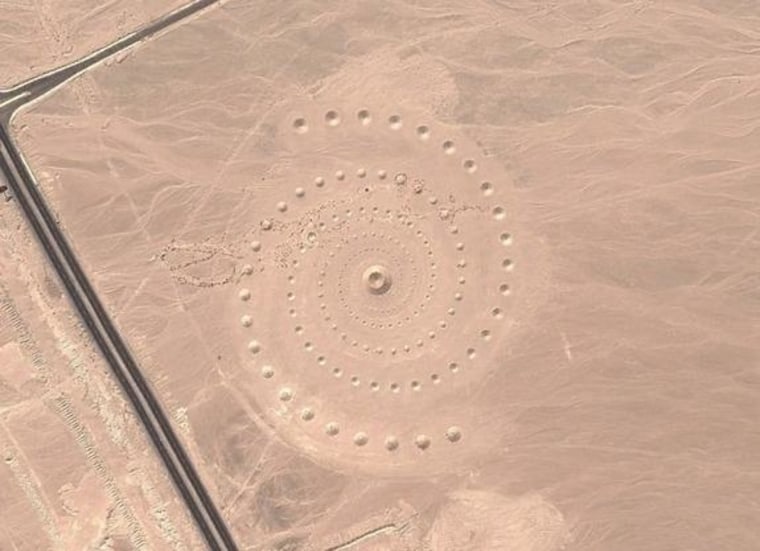To some viewers, it looks like a landing strip for extraterrestrial spacecraft — or perhaps the portal to a parallel universe, if not an ancient monument to a benevolent deity who had a keen eye for design and symmetry.
But what people are actually seeing in the desolate reaches of the Egyptian desert, just a short distance from the shores of the Red Sea, is in fact an environmental art installation. And it's been baffling tourists and armchair travelers since it was constructed in March 1997.
Danae Stratou, Alexandra Stratou and Stella Constantinides worked as a team to design and build the enormous 1 million square foot (100,000 square meters) piece of artwork — called Desert Breath — to celebrate "the desert as a state of mind, a landscape of the mind," as stated on the artists' website. [See Photos of the Stunning 'Desert Breath' Spiral]
Constructed as two interlocking spirals — one with vertical cones, the other with conical depressions in the desert floor — Desert Breath was originally designed with a small lake at its center, but recent images on Google Maps show that the lake has emptied.
The entire structure, in fact, is slowly disintegrating as the sand that forms the art piece slowly blows off its cone-shaped hills and fills in its depressions, making it "an instrument to measure the passage of time."
The art piece joins other mysterious images and environmental artworks that fascinate viewers on Google Earth, Google Maps and other online platforms.
The creators of Desert Breath have no political or cult-like aspirations, however: "Located … at the point where the immensity of the sea meets the immensity of the desert, the work functions on two different levels in terms of viewpoint: from above as a visual image, and from the ground, walking the spiral pathway, a physical experience."
- Mark Lallanilla, LiveScience
Follow Marc Lallanilla on Twitter and Google+. Follow us @livescience, Facebook & Google+. This is a version of a report that appeared on LiveScience. Read the original report.
- 12 Strangest Sights on Google Earth
- Gallery: The 10 Strangest Places on Earth
- The 10 Biggest Deserts on Earth
Copyright 2014 LiveScience, a TechMediaNetwork company. All rights reserved. This material may not be published, broadcast, rewritten or redistributed.
